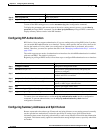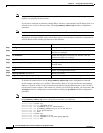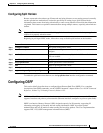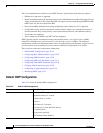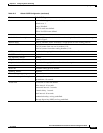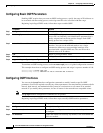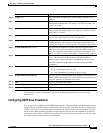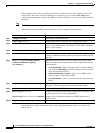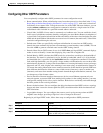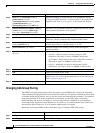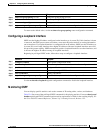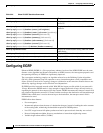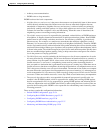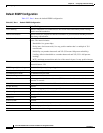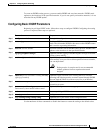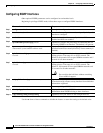
32-29
Cisco ME 3400 Ethernet Access Switch Software Configuration Guide
78-17058-01
Chapter 32 Configuring IP Unicast Routing
Configuring OSPF
Configuring Other OSPF Parameters
You can optionally configure other OSPF parameters in router configuration mode.
• Route summarization: When redistributing routes from other protocols as described in the “Using
Route Maps to Redistribute Routing Information” section on page 32-73, each route is advertised
individually in an external LSA. To help decrease the size of the OSPF link state database, you can
use the summary-address router configuration command to advertise a single router for all the
redistributed routes included in a specified network address and mask.
• Virtual links: In OSPF, all areas must be connected to a backbone area. You can establish a virtual
link in case of a backbone-continuity break by configuring two Area Border Routers as endpoints of
a virtual link. Configuration information includes the identity of the other virtual endpoint (the other
ABR) and the nonbackbone link that the two routers have in common (the transit area). Virtual links
cannot be configured through a stub area.
• Default route: When you specifically configure redistribution of routes into an OSPF routing
domain, the route automatically becomes an autonomous system boundary router (ASBR). You can
force the ASBR to generate a default route into the OSPF routing domain.
• Domain Name Server (DNS) names for use in all OSPF show privileged EXEC command displays
makes it easier to identify a router than displaying it by router ID or neighbor ID.
• Default Metrics: OSPF calculates the OSPF metric for an interface according to the bandwidth of
the interface. The metric is calculated as ref-bw divided by bandwidth, where ref is 10 by default,
and bandwidth (bw) is specified by the bandwidth interface configuration command. For multiple
links with high bandwidth, you can specify a larger number to differentiate the cost on those links.
• Administrative distance is a rating of the trustworthiness of a routing information source, an integer
between 0 and 255, with a higher value meaning a lower trust rating. An administrative distance of
255 means the routing information source cannot be trusted at all and should be ignored. OSPF uses
three different administrative distances: routes within an area (interarea), routes to another area
(interarea), and routes from another routing domain learned through redistribution (external). You
can change any of the distance values.
• Passive interfaces: Because interfaces between two devices on an Ethernet represent only one
network segment, to prevent OSPF from sending hello packets for the sending interface, you must
configure the sending device to be a passive interface. Both devices can identify each other through
the hello packet for the receiving interface.
• Route calculation timers: You can configure the delay time between when OSPF receives a topology
change and when it starts the shortest path first (SPF) calculation and the hold time between two
SPF calculations.
• Log neighbor changes: You can configure the router to send a syslog message when an OSPF
neighbor state changes, providing a high-level view of changes in the router.
Beginning in privileged EXEC mode, follow these steps to configure these OSPF parameters:
Command Purpose
Step 1
configure terminal Enter global configuration mode.
Step 2
router ospf process-id Enable OSPF routing, and enter router configuration mode.
Step 3
summary-address address mask (Optional) Specify an address and IP subnet mask for redistributed
routes so that only one summary route is advertised.



